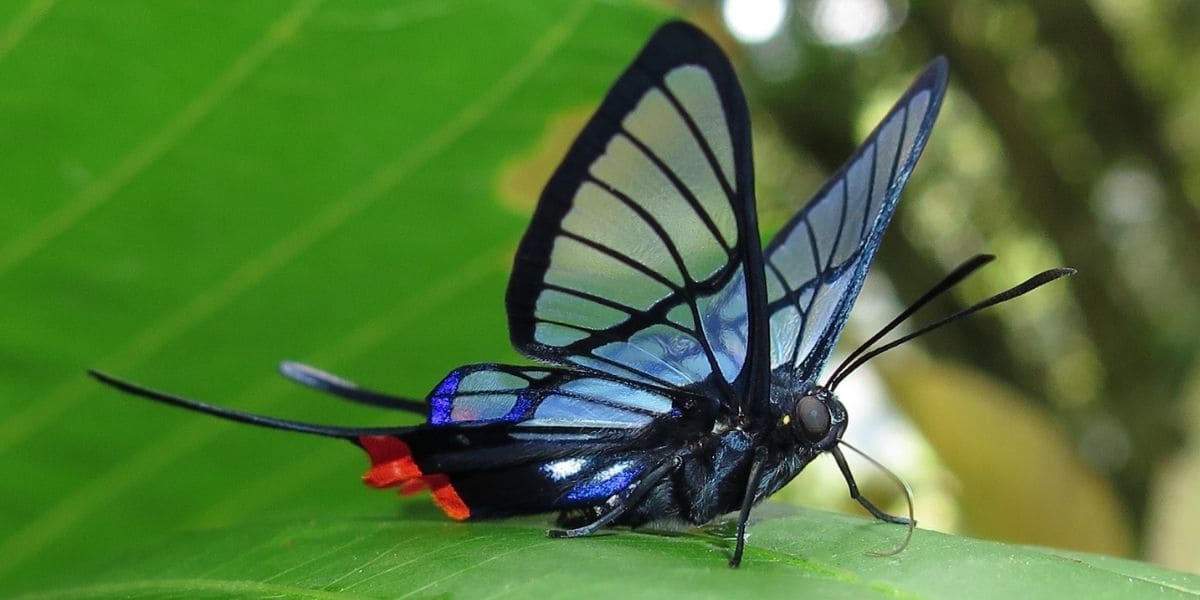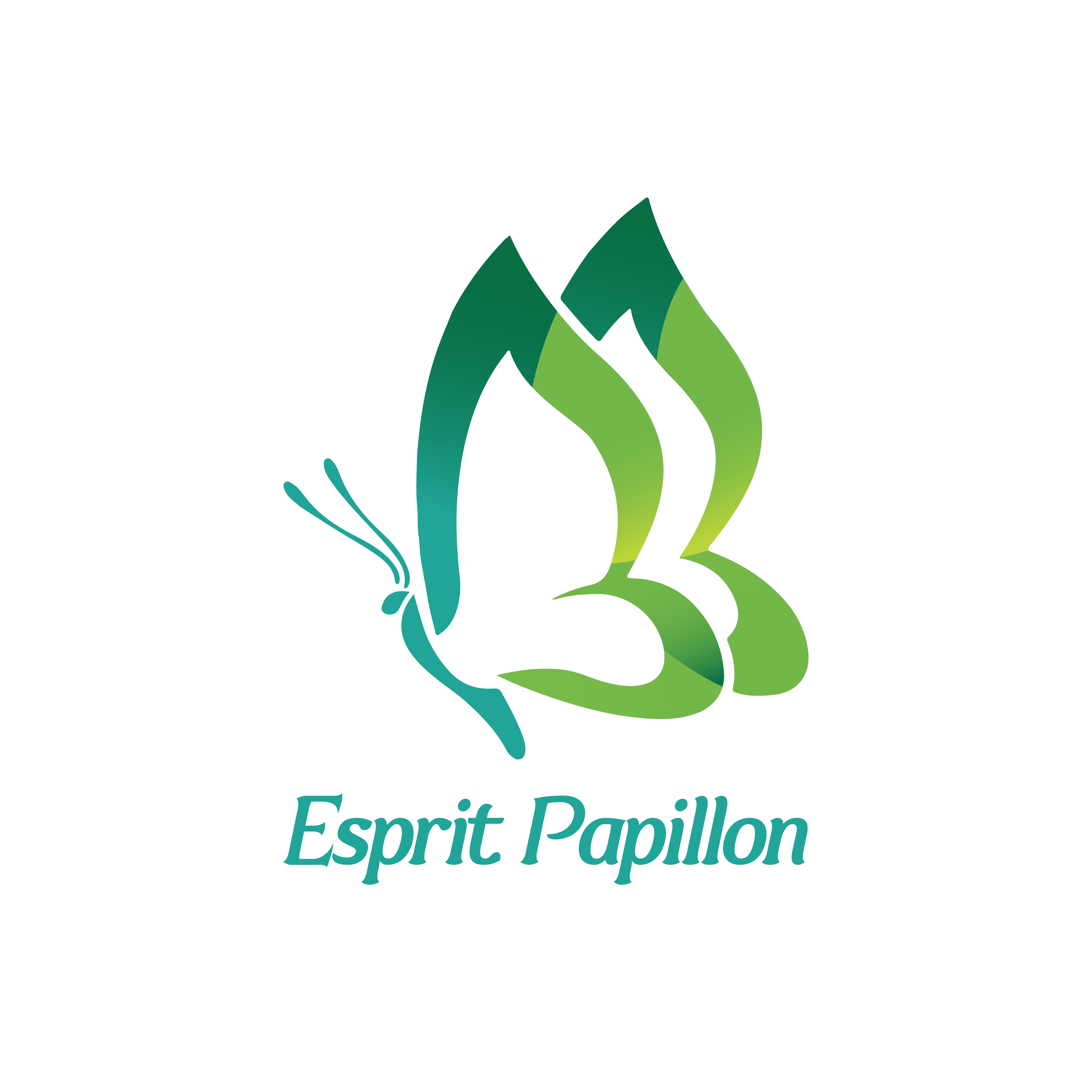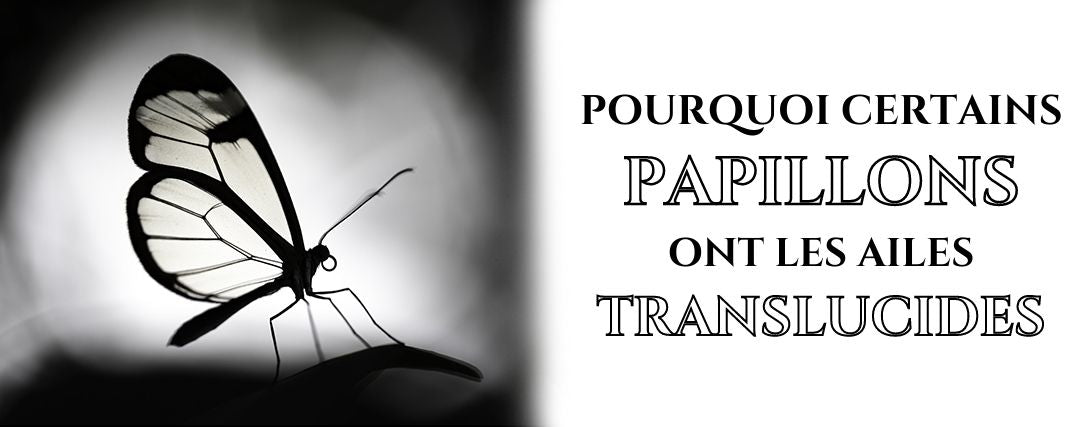Many insects, such as flies or dragonflies, developed transparent wings early in their development as a species, but most butterflies are generally an exception to this rule. In the case of light-winged butterflies, it appears that they evolved in reverse after first developing colorful wings.
In this article dedicated to translucent butterflies, we will see
- What is the origin of this development?
- Some species of butterflies with translucent wings
Where does the transparency of the wings of certain butterflies come from?
Clear-winged butterflies have evolved to have transparent wings to avoid detection in environments with high predator pressure, according to new research.
Transparency in insects in general is very common in open water habitats where there is nowhere to hide, but it is rarer on land. It is clear that transparency reduces detectability in terrestrial prey.
Moths and clear-winged moths are widely distributed throughout the world and have evolved this trait independently in many cases. Some species have even evolved leaf mimicry in which parts of their wings are transparent. This recreates the appearance of holes in fallen leaves, allowing them to blend in better with their surroundings.
It's strange that these butterflies have evolved this extra defense, because many of them are already venomous to the predators that usually prey on them. In fact, the very development of bright colors is often a signal to potential predators that a creature is venomous. This phenomenon is called aposematism.
However, predators usually only learn not to eat brightly colored animals after they have "tasted" them and tolerated the venom or bad taste they produce. It is therefore assumed that these butterflies have developed transparent wings in places where predators are so numerous that their colors would not be a sufficiently deterrent protection.
Some species of translucent butterfly
Here is a list of Lepidoptera species that have acquired translucent wings throughout their evolution.
Greta Oto

Let's start with one of the best known of them, the Greta oto. It is a species of butterfly that is a member of the Nymphalidae family. It is also called "Glasswing butterfly" in English which translates to "Butterfly with glass wings". In Spanish-speaking areas, it may also be called "espejitos", meaning "little mirrors".
Birds are its main predators. In addition to transparency of its wings, the Greta oto defends itself by consuming toxins through plants of the Asteraceae family, both at the caterpillar and butterfly stages. There consumption of toxins gives the butterfly a foul taste which discourages predation.
This little butterfly is recognizable by its wings transparent with black veins, with opaque dark brown borders, tinged with red or orange. It measures 2.8 to 3 cm long and has a wingspan of 5.6 to 6.1 cm.
The Greta Oto is found primarily in the central and northern regions of South America, with sightings ranging from Texas and as far as Chile. It thrives in the rainforests of Central and South American countries.
Oxynetra semihyalina

Oxynetra semihyalina is a stocky-bodied butterfly of the family Hesperiidae. It is characterized by a massive and muscular thorax and a conical abdomen with compressed segments. Its wings are translucent in the middle and post-basal area black. Their tips are dark with metallic blue reflections.
This moth resides in the foothills of the Andes, from Colombia to Bolivia. It is possible to observe it near watercourses, at altitudes between approximately 300 and 900 meters.
Oleria estella

Oleria estella is a species of butterfly with a wingspan of approximately 4 cm. It belongs to the Nymphalidae family.
Its black-veined wings are transparent. They have an orange outline and a black margin with white spots. There is also a white stripe on its forewings.
It is found from Venezuela to Bolivia in the eastern foothills of the Andes.
Chorinea licursis

Chorinea licursis is a species of butterfly belonging to the Riodinidae family.
It has a wingspan of approximately 3 to 3.5 cm. They have transparent wings edged with black and long tails on the hindwings. The fore and hind wings are crossed by black veins and two black transverse bands. The bases of the hindwing tails have bright red markings.
This species can be found in the forests of Brazil, at an altitude of around 1000 meters.
Lamproptera meges

Lamproptera meges is a species of butterfly in the family Papilionidae. It has a wingspan ranging from 40 to 55 millimeters.
It is essentially black and white and has a very large white-tipped tail, 25 to 40 millimeters long. Unlike its hind wings, its forewings are translucent. They have a stain hyaline triangular with black borders. They are also crossed by a white band which continues on the hind wings.
It is found in parts of South Asia and Southeast Asia. It is usually found in open, sunny areas of rainforests, almost always near streams and waterways.
Cosmosoma myrodora

Cosmosoma myrodora is a moth that belongs to the Erebidae family. It is also called "Scarlet-bodied Wasp Moth" in English, which means "scarlet-bodied wasp moth".
The span of its wings is 3 to 3.5 cm. This species with transparent wings a bright red body with metallic blue spots on the abdomen and translucent wings. The extremity. The veins and edges of the fore and hind wings are black.
It is found in the United States in Florida and from South Carolina to Texas. Its habitat is located in the coastal plains.
Haetera Piera

Haetera piera is a butterfly of the Nymphalidae family.
It is a translucent butterfly with pearly wings and brown veins. Its hind wings feature two ocelli with circles outlined in orange and brown containing black and a white dot. They are also dotted with scales ranging from orange to brown and forming patterns around the eyespots.
This species is found in the Guianas, Brazil, Ecuador, Peru, Bolivia and Venezuela. Its habitat is located in the dark areas of tropical rainforests as well as in the undergrowth.
Apiform sesia

Sesia apiformis also known as the hornet butterfly, belongs to the family Sesiidae.
The hornet butterfly has a wingspan ranging from 9 to 10 cm. Both females and males have yellow and black striped abdomens, but the number of stripes varies; females have two stripes while males have three. Females are on average larger than males. They both have transparent wings.
The coloration of Sesia apiformis is an example of Batesian mimicry, as it resembles the coloration of hornets. This lepidopteran is as large as a hornet and even has a rather jerky flight when disturbed, however it is more yellow and has no size between the abdomen and the thorax. This provides protection against predators who want to avoid being stung and therefore do not try to eat the moth.
The hornet butterfly has been linked to the great dieback of poplar trees in Europe, as its larvae burrow into the trunk of the tree before reemerging as an adult.
It is found in continental Europe, Great Britain and parts of the Middle East. It has also recently been introduced to America and Canada.
This moth is often found in open habitats such as parks, golf courses and swampy areas.
Methona confuseda

Methona confusa is a butterfly belonging to the Nymphalidae family.
It has a wingspan of approximately 11 cm. Its wings have no nanostructures and are therefore transparent and reflective. It has black margins and black crossbars on the fore and hindwings. Small white spots are present along the wing edge on the underside of the wing. There are also white spots on the abdomen and thorax. The antennae are black with a yellow tip.
This species can be found in South America in the Amazon basin. Its population is declining, which could be due to predation during the larval stage by ants and birds. During the nymphal stage, they are affected by parasitoid wasps and fungi.
This species is often found in montane forests and mountains such as the Andes with altitudes up to 3,500 meters.





